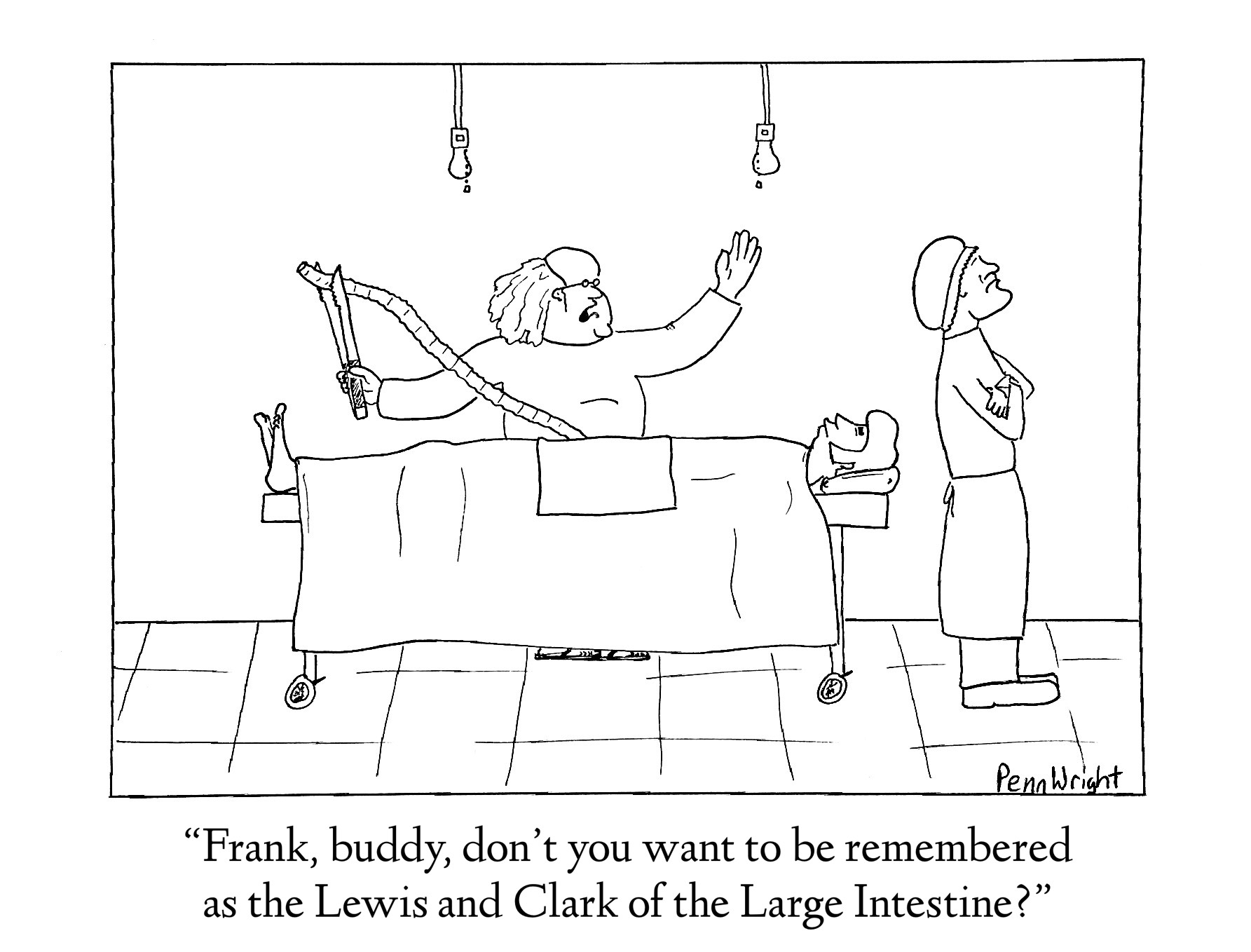The Rundown:
Botnik Studios aims to answer the question: Can machines be humorous? It’s a very finicky creative art with really no formula. However, that’s not to say that AI cannot be extremely helpful to the profession. Over the next few years, comedians will begin using AI to help create their act and even in some cases as a fixture in their act.
Every week on Quick Theories, we look at how an industry is changing to predict how we might fit in with this change. However, there’s an equally important question, a question that Buffett and Bezos both live by:
What’s not going to change in the next ten years?
This is why we’re going to look at an industry that won’t be derailed and “revolutionized” by artificial intelligence – an industry where its players have the choice to use AI, and even then, the algorithms won’t likely give those people an advantage. That is the humor industry; more specifically cartooning.
At the peak of his distribution, Gary Larson’s The Far Side comic was syndicated to over 1,900 newspapers and read by millions of people every day. For fifteen years, he changed the way people look at life. That’s the power of cartoons and comic strips.
Not much has changed technologically for cartoonists since Larson’s heyday in the early 90s or even Charles Schultz’s inaugural Peanuts cartoon in the 50s. The only difference
The Oatmeal, Mr. Lovenstein, and xkcd are three famous webcomics of our day that may one day be compared to the scale and impact of Calvin and Hobbes, Dilbert, and Garfield.
At its essence, there’s no inherent need for new technology in the cartooning industry. The lack of advanced software has not caused it to fade from existence. The simplicity doesn’t make it less funny in our digital world. In fact, it is perhaps the simplicity of cartoons that people gravitate toward. For the foreseeable future, it’s an unchanging industry.
But, that’s not to say that AI cannot be advantageous to cartoonists.
Already a future thinker?
Then become a friend.
Bot-created Comedy
Can machines be humorous? It’s an odd question, but it’s the thesis behind Botnik Studios – a community of writers, artists, and developers using machines to create things, some funny, some not:
The collective began when Google DeepMind wanted to make a bot for The New Yorker‘s caption contest, which the magazine’s cartoon editor from 1997 to 2017, Bob Mankoff, created. Noticing an uptick in similar projects trying to “solve” creative tasks with automation, Mankoff and Brew created Botnik, which sought to augment instead of
Georgina Ustik, The Next Web. automate
“We use machines to enable new kinds of human creativity. Botnik Studios… grew from the user testers for our first web app, a predictive text keyboard called Voicebox that offers word suggestions based on any source text you feed it.”
They’ve trained about a dozen predictive text keyboards on scripts from the X-Files and Seinfeld, beauty ads, and even pancake recipes. It’s not fully autonomous. The process is really augmentative, where the machine suggests about a dozen words at a time and the user gets to choose from the suggested words to string together sentences (the words change after each selection).
Using these keyboards, the collective has created a spoof installment in the Harry Potter series titled Harry Potter and the Portrait that Looked Like A Huge Pile of Ash. Also, in 2019 they’re releasing an album called The
Honestly, their results are nonsensical. But when performed live, I actually got quite a kick out of it. Therefore, the AI cannot be funny on its own without a little help from a human.
Upon digging a little further, I found a comedian that’s actually brought AI onto the stage with him. Piotr Mirowski, a former Google Engineer, has developed a robot with conversational AI which interacts with him during his act. The two get on stage and go about having a conversation.
What A.I. is good at, Mr. Mirowski said, is saying unusual things that challenge the human improviser to work harder, which can increase satisfaction when they manage to make a scene work. “Improv is like intellectual and mental tightrope walking,” he said. “The robot is kind of making the tightrope longer.”
Alex Marshall, The New York Times
Piotr’s words resonate with the same challenges as Botnik Studios. The biggest deterrent to a comedic AI is that they don’t understand dialogue and cannot read and relate to an audience. The good thing is that every major tech company is pooling massive resources into achieving an AI that can casually converse for hours. At which point, I think will see robot comedians.
For the time being, AI will have to play the role of comedic inspirer.
AI-augmented Cartooning
I tried out Botnik’s Sigmund Freud-inspired predictive text writer and created these two lines:
- Dream content may readily separate the patient from their brain.
- Medical geographers are actually made during sorrow.
The incoherence (edging on slight profundity) made me chuckle. Just for fun, I sent the two lines conjured up using Botnik’s predictive writer over to a web cartoonist I know, just to see his response. This is what he sent back:

This was actually quite fun. I mean, never in a million moments would I have thought about the concept of a “medical geographer”. I wouldn’t say this is my best work, but I can see how the process would help me explore the nooks and crannies of wordplay we never imagine. I think I’ll probably do more of this in the future and hopefully be able to get more work out the door.
Penn Wright
In theory, we could probably witness the first AI-generated comic strip in just a few years. With the billions of memes on the Internet, which have already been rated for their “funniness” based on the number of likes. It wouldn’t be that difficult for an engineer to create an AI that can come up with its own captions for new memes. However, this is just not a lucrative problem to solve, so there aren’t many people at it.
For the time being, as is the case with Botnik Studios, Piotr Mirowski, and Penn Wright, AI will help humorous people continue to find new ideas.
What’s the Point?
You’re probably wondering why we’d even want AI that can be funny. Well, the way I see it is with an AI-sidekick or AI as competition, comedic figures can be empowered to bring more comedy into the world. Humor is absolutely the best medicine out there. Unlike other art forms, where scarcity increases the value. The more comedy the better. Jerry Seinfeld elaborates on this:
My entire adult life is just making comedy stuff. For some reason, it’s important to me to make as much of it as I can. I imagine a woodchuck has a similar mindset: ‘I’ve got to chuck wood, as much as I can, because that’s my thing.’
Jerry Seinfeld, Comedians in Cars Getting Coffee
Comedy has the luxury of an honest feedback loop. Laughter is an involuntary response. If people laugh, it means that the joke was funny. If people didn’t laugh, then it’s not funny. With comedy, the good stuff sticks. And sometimes you have to go through a lot of unfunny material to hit a solid joke.
To be frank, I’m not sure I have the answers when it comes to AI in comedy. What are your thoughts on this unexpected application of artificial intelligence?
